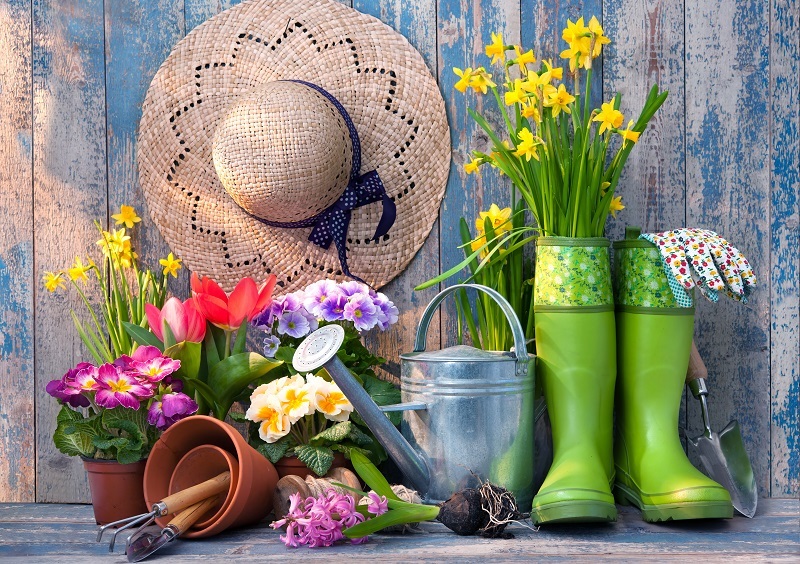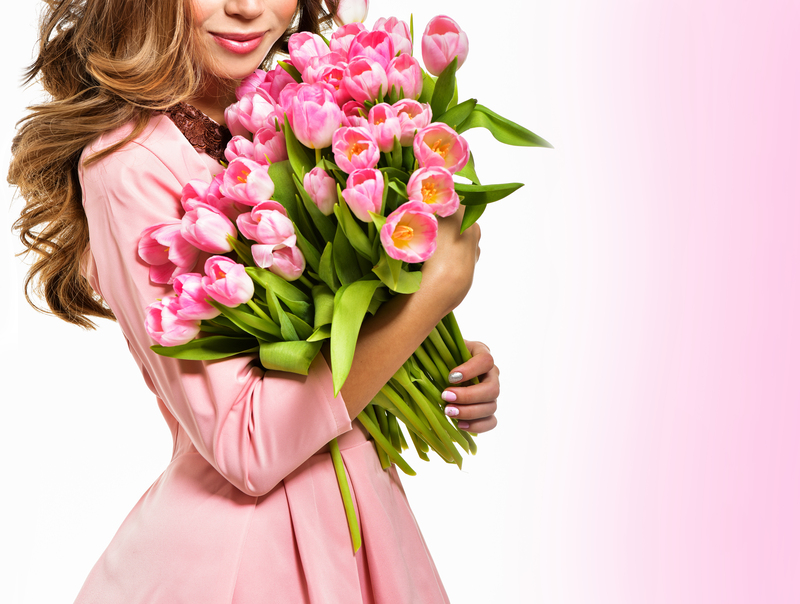Boost Your Floral Longevity with These Easy Methods
Do you love the beauty and fragrance of fresh flowers in your home, only to be disappointed when they wilt too quickly? If so, you aren't alone! Many flower enthusiasts search for ways to maximize the lifespan of their bouquets. By following expert tips and simple methods, you can prolong floral freshness, extending the joy flowers bring and getting more value from your purchase or garden picks. In this comprehensive guide, you'll discover easy, science-backed strategies to make your flowers last longer and keep them vibrant and lovely for days or even weeks.

Why Do Cut Flowers Wilt Prematurely?
Flowers begin to fade the moment they're cut from their stems. The natural supply of water and nutrients is disrupted, and the plant must rely on what's left in its tissues. Various factors accelerate wilting--bacteria, improper care, temperature, even the type of vase or water. To truly boost your floral longevity, it's important to understand these factors and learn how to counteract them.
The Main Causes of Flower Deterioration
- Bacterial Growth: When stems sit in water, bacteria can quickly multiply, blocking the plant's vascular system and preventing proper water uptake.
- Water Quality: Dirty or chemically-laden water can damage flowers. Hard water may also contribute to quick decline.
- Physical Damage: Crushed or mishandled stems struggle to absorb water, hastening wilting.
- Temperature Extremes: Exposure to heat, direct sunlight, or sudden chills can shock and weaken blooms.
- Ethylene Gas: Produced by ripening fruits and some flowers, this gas hastens the aging process.
Essential Methods to Prolong Flower Longevity
Looking for ways to extend floral life? Below are proven, easy to apply methods for boosting vase life and increasing flower longevity at home or in your workspace:
1. Prepare Flowers Immediately After Cutting
- Time is critical: After harvesting or receiving fresh blooms, process them as quickly as possible.
- Remove any leaves that will be submerged in water--this prevents rot and bacterial growth.
- Recut stems at an angle under running water to open up the vascular system for better hydration.
Tip: Use sharp, clean floral scissors or a knife to avoid crushing the stem.
2. Choose the Right Vase and Clean It Well
- Start with a clean vase: Wash thoroughly with hot water and soap. Rinse well to eradicate any bacteria or residue.
- Select a vase that suits the length and weight of your blooms. Not too tight or too wide!
3. Focus on Water Quality and Temperature
- Use fresh, lukewarm water: Flowers hydrate better with water that isn't too cold or hot.
- If possible, let tap water sit for a few hours so chlorine can evaporate.
- Change the water every 2 days for optimal floral preservation.
4. Add Flower Food - or Homemade Alternatives
Commercial flower food mixes contain essential nutrients and anti-bacterial agents to keep your flowers fresh for longer. Did you know you can make your own DIY floral preservative? Mix a quart of water with 2 tablespoons of lemon juice, 1 tablespoon of sugar, and half a teaspoon of bleach. The sugar feeds the flowers, lemon juice acidifies the water, and bleach controls bacteria.
5. Maintain the Right Environment
- Avoid placing flowers in direct sunlight, near heating vents, or underneath ceiling fans.
- Keep arrangements away from ripening fruit--they release ethylene gas, which speeds up wilting.
- Cool rooms prolong blossom life. Ideally, flowers last longer at 65-72?F (18-22?C).
6. Re-Cut the Stems Regularly
Every 2-3 days, trim the base of each stem by about 1 inch. This removes any blockages in the vascular tissue and helps with continual water absorption--a simple step to boost floral durability.
7. Remove Wilting or Dying Flowers
As soon as you notice a bloom fading or leaves yellowing, remove it from the arrangement. Decaying flowers speed up the demise of others by increasing bacterial load and releasing ethylene gas.
8. Special Treatment for Specific Flowers
- Woody stems (roses, lilacs): Split or gently hammer the stem's base before placing in water to maximize absorption.
- Bulb flowers (daffodils, tulips): Don't mix with other types of flowers--they release sap that shortens the life of companions!
- Milky sap stems (poppies, euphorbia): Seal cut stems by holding them over a flame for a few seconds, preventing sap loss.
Common Myths About Flower Longevity Debunked
- Sugar alone can preserve flowers: Not true. Sugar can feed flowers but encourages bacteria unless balanced with acid and disinfectant.
- Pennies in the vase extend flower life: Modern coins don't contain enough copper to act as an effective anti-bacterial agent.
- Bleach is dangerous in small doses: Actually, a tiny amount (1/4 teaspoon per quart) is safe and helps control bacteria.
Advanced Tips for Maximizing Floral Longevity
Once you've mastered the basic steps, consider these professional florist secrets to further stretch the life of your fresh or purchased blooms:
Condition Flowers Before Arranging
Let freshly cut flowers rest in a cool, dark room inside buckets of water for a few hours before arranging them. This allows them to fully hydrate and harden off--enhancing their vase life.
Use the Refrigerator Wisely
- Place flowers in the fridge overnight or during hot days--but ensure the temperature isn't below 36?F (2?C) to avoid chilling injury.
- Never store near fruits or vegetables!
Stimulate Blooms with Natural Additives
Aspirin, vodka, or even clear soda (like Sprite) are popular additives, but their efficacy varies. Aspirin slightly acidifies water and can reduce bacteria, while a splash of vodka acts as an antimicrobial (but too much can be harmful).
Use Deionized or Distilled Water for Delicate Flowers
For sensitive blossoms, consider using distilled or deionized water. This limits exposure to minerals or chemicals present in tap water, offering the cleanest hydration.
Avoid Overcrowding Your Vase
If stems are crammed together, airflow is reduced, and bacteria thrive. Maintain moderate spacing to prolong floral vitality.
DIY Flower Preservative Recipes
Running low on commercial flower food? Try one of these tried-and-true homemade flower preservative formulas:
- Basic Mix: 2 cups water + 2 tbsp lemon juice + 1 tbsp sugar + 1/2 tsp bleach.
- Vinegar Alternative: 2 tbsp apple cider vinegar + 2 tbsp sugar per quart of water. (Vinegar lowers pH, and sugar feeds the blooms.)
- Soda Formula: 1/4 cup clear non-diet soda (like Sprite) + 1/2 tsp bleach per quart of water. The sugar and acid mimic commercial preservatives while bleach keeps bacteria at bay.
Always mix ingredients thoroughly and change the solution every couple of days for best effect.
How to Make Different Flowers Last Longer
Roses:
- Recut stems underwater and remove guard petals.
- Use a clean vase and change the water frequently.
- Avoid direct sun and drafts.
Orchids:
- These need distilled water and high humidity.
- Mist petals lightly every day and keep away from fruit.
Lilies:
- Remove pollen-laden stamens to prevent staining and slow wilting.
- Keep away from fruit and change water often.
Tulips:
- Recut stems each day to prevent drooping.
- Cool temperatures are especially helpful for extending vase life.
Natural Ways to Prolong Flower Life Without Chemicals
- Use filtered or rainwater for hydration.
- Trim stems with clean, sharp tools only.
- Mist arrangements to keep petals from drying.
- Keep vases clean to reduce bacteria naturally.
- Store blooms in a dark, cool place overnight whenever possible.

Common Questions on Floral Longevity
Can I revive wilting flowers?
If a flower begins to wilt, try giving it a cold water soak for 30-60 minutes, recut the stems, and replace the vase water. For severe cases, wrap the flowers in damp newspaper and submerge them (except the blossoms) in lukewarm water for several hours.
How long do most cut flowers last?
The vase life of flowers varies:
- Roses: 7-12 days
- Lilies: 8-14 days
- Tulips: 5-10 days
- Carnations: Up to 21 days
- Orchids: 10-21 days
Is it OK to refrigerate flowers overnight?
Yes! Storing blooms in the fridge overnight (above freezing) can greatly extend their lifespan.
Conclusion: Enjoy Longer Lasting Flowers with Simple Steps
By applying the methods detailed above, anyone can boost floral longevity and savor the natural beauty of flowers for much longer. Remember, the keys are cleanliness, regular care, and the right environment. Whether you're displaying homegrown blossoms or a store-bought bouquet, you now have the expertise to keep arrangements fresh, fragrant, and fabulous. Enjoy your flowers--and the smiles they bring--every day!
Ready to transform your next bouquet? Start using these easy and effective techniques for longer-lasting, more beautiful flowers today!
